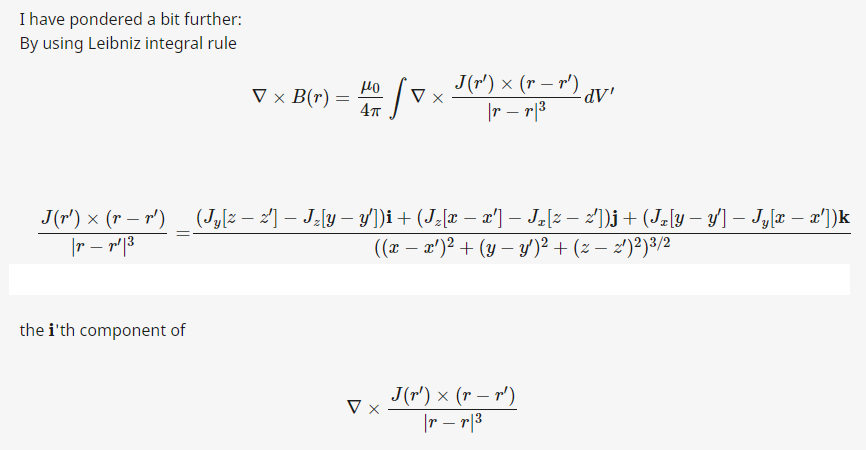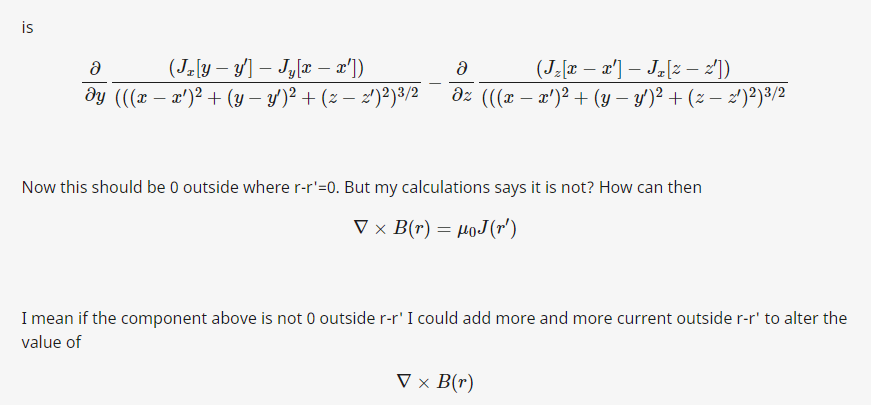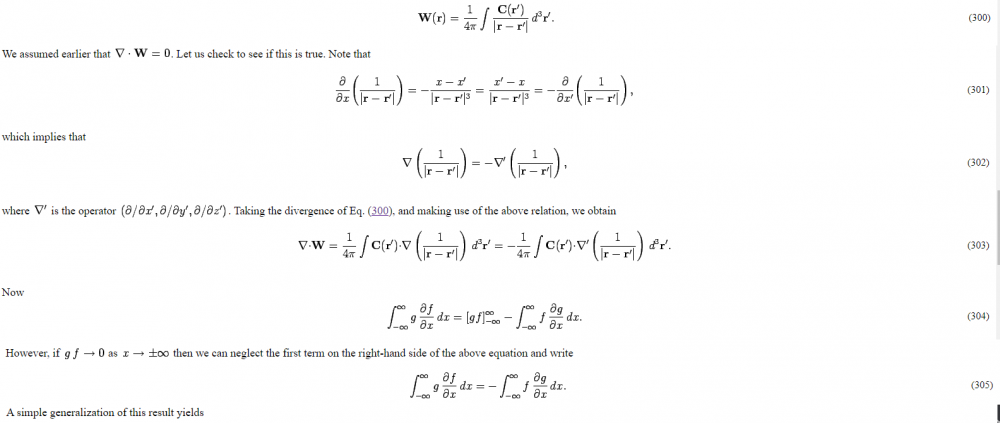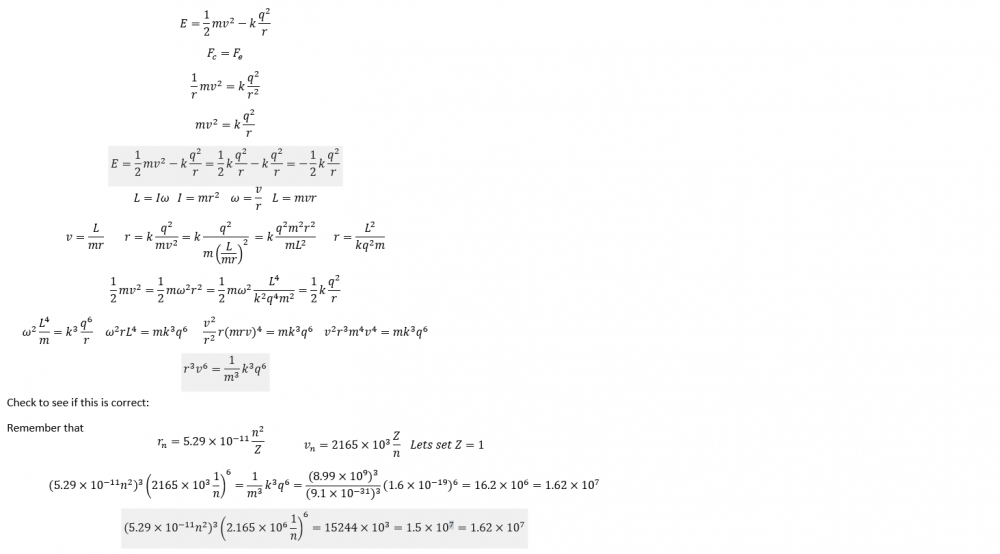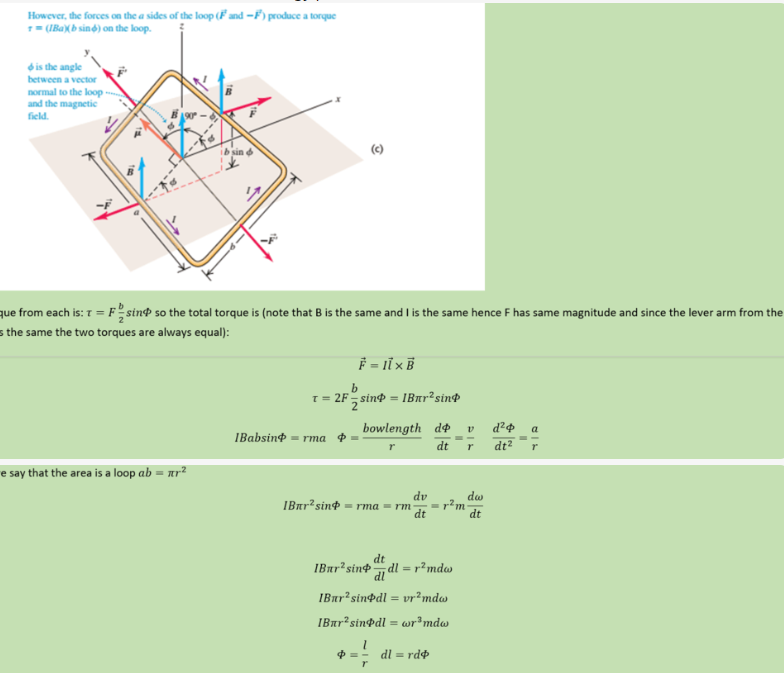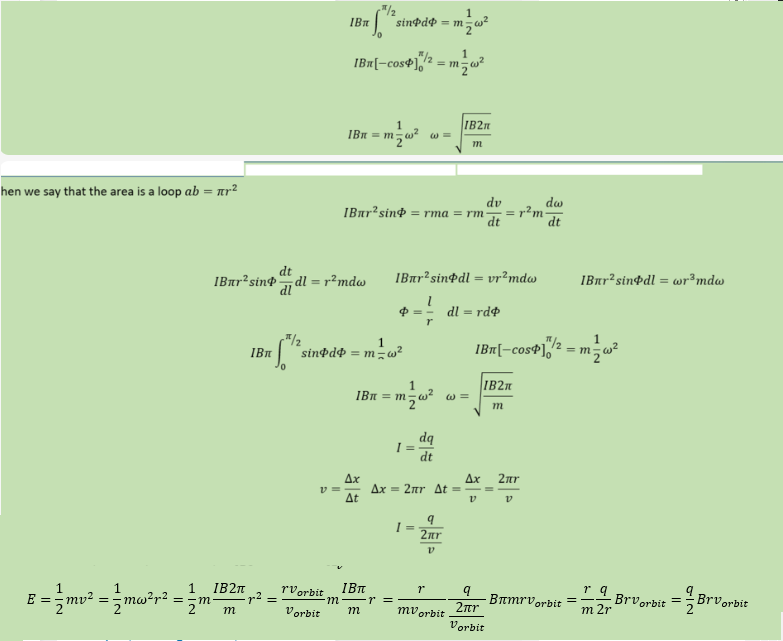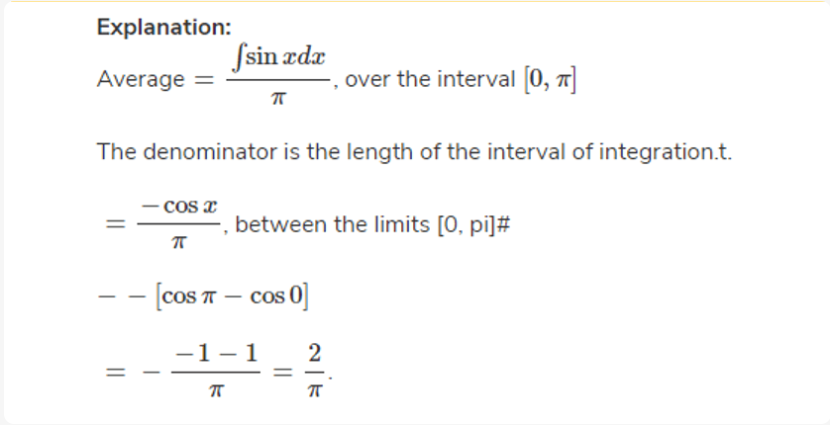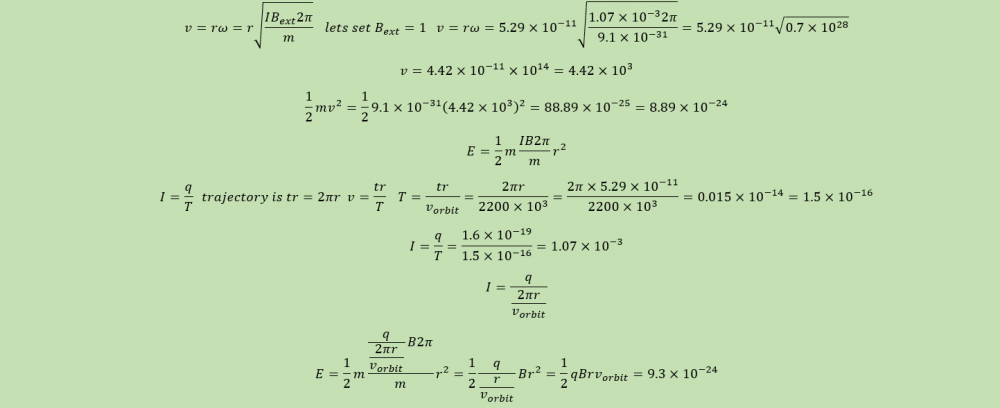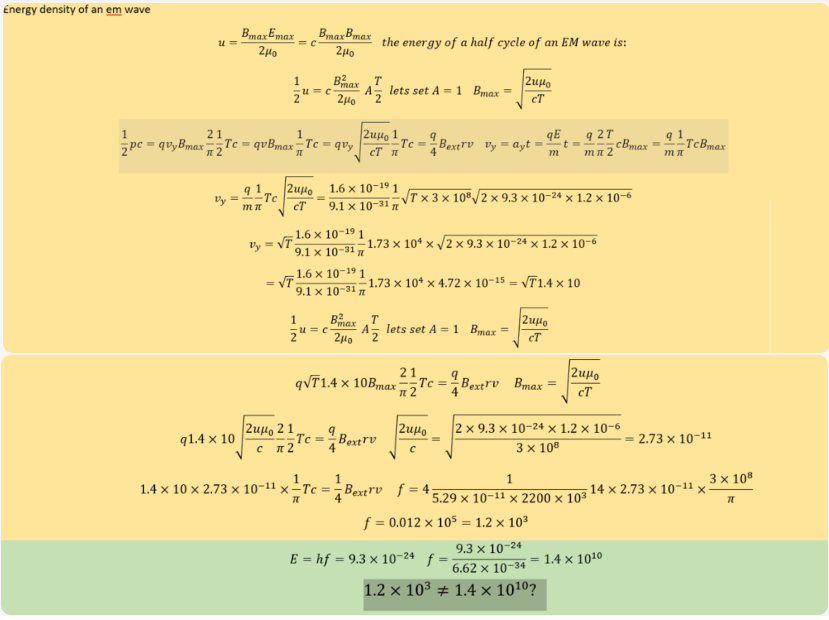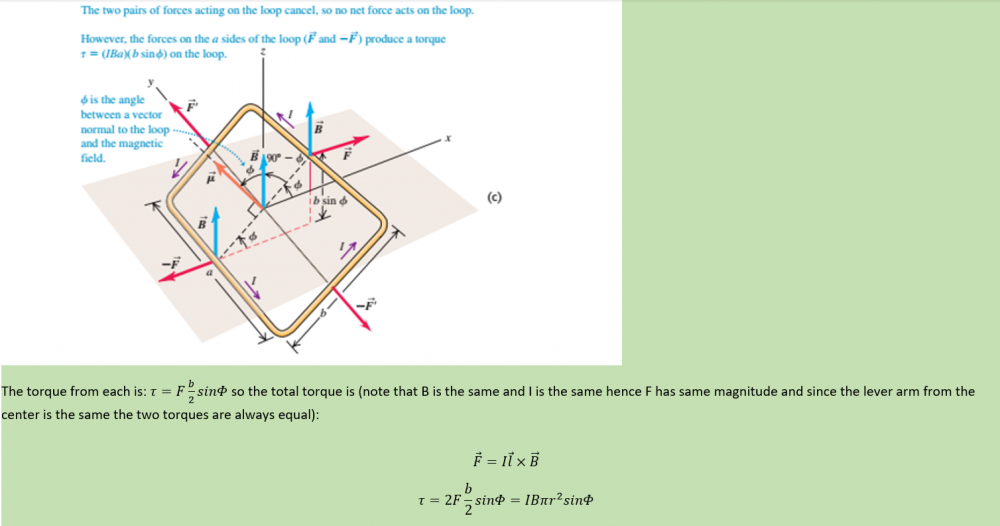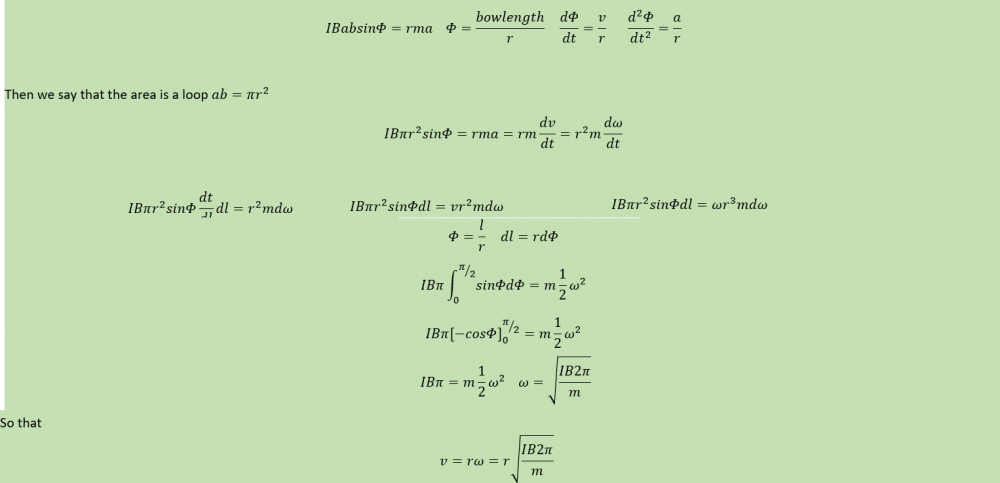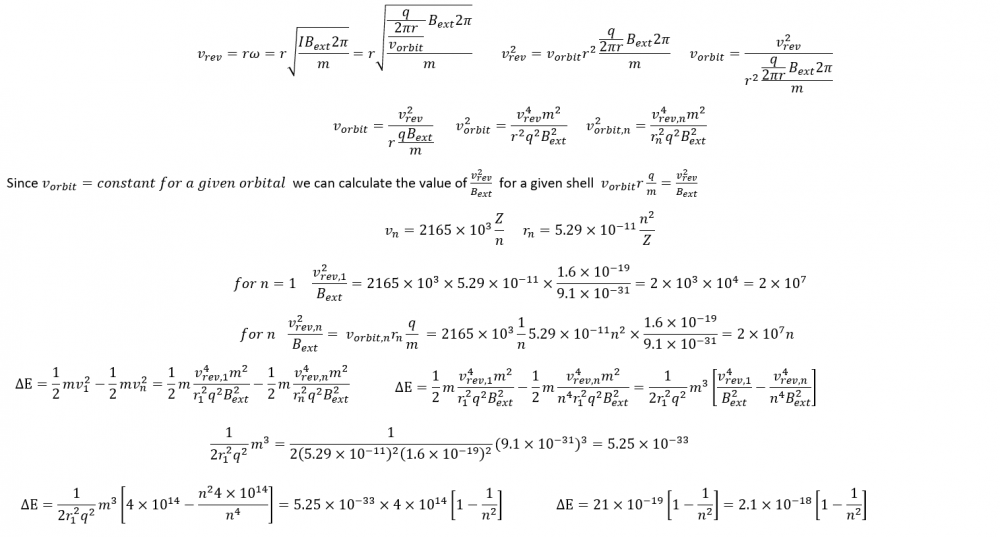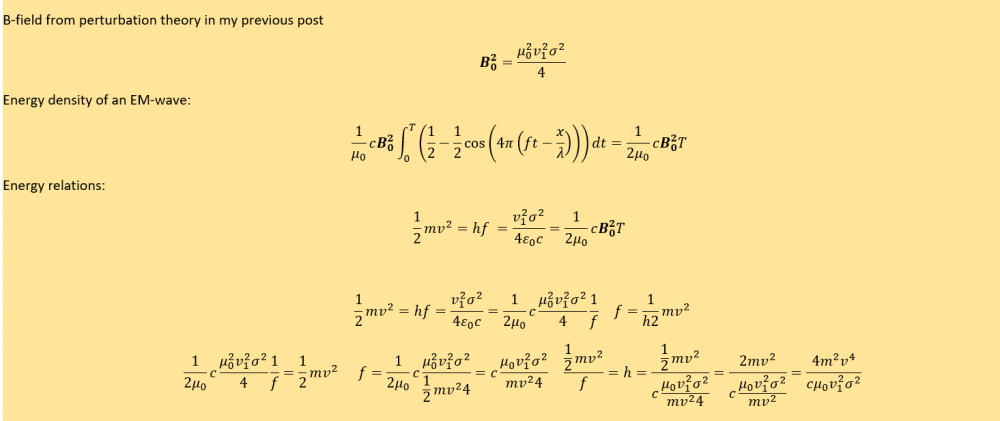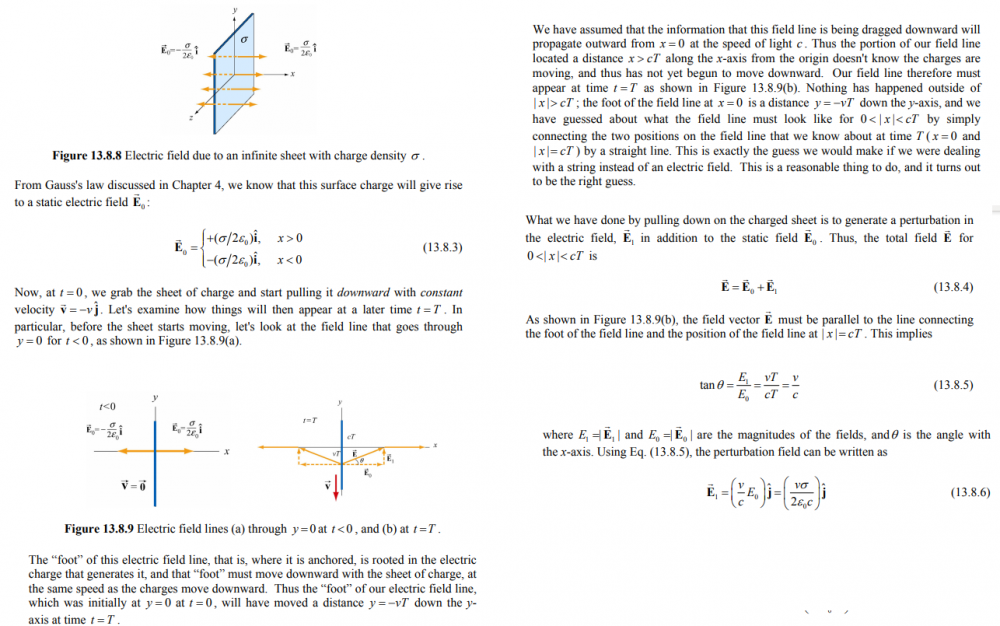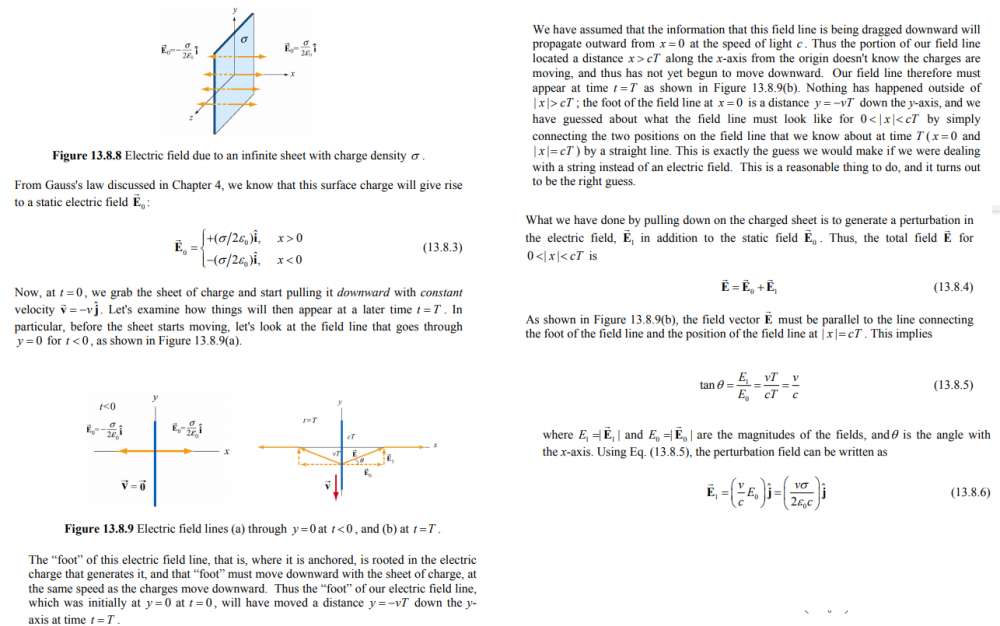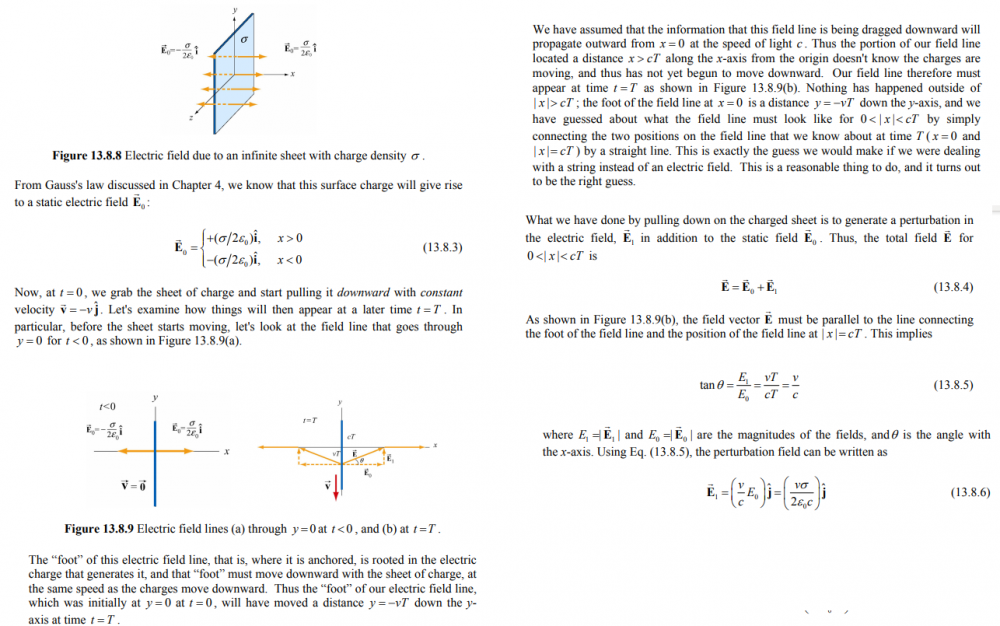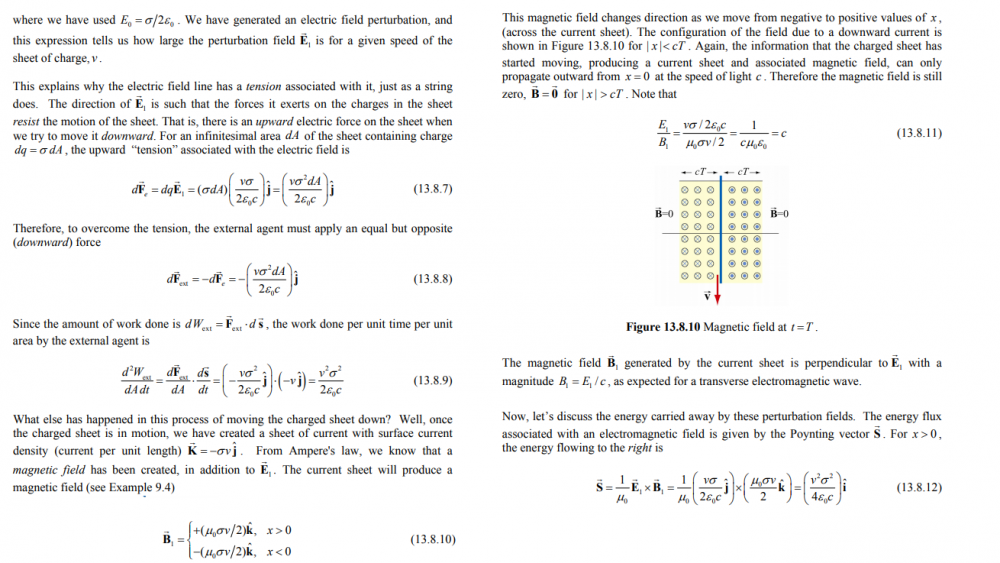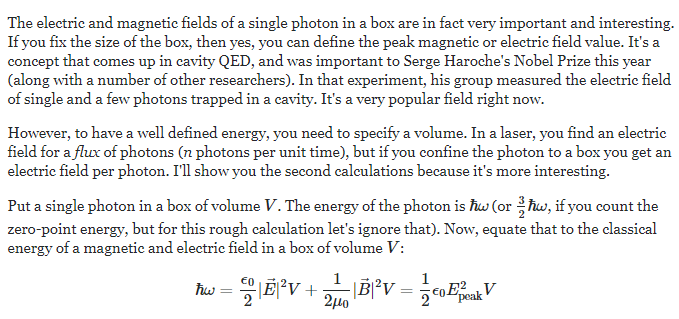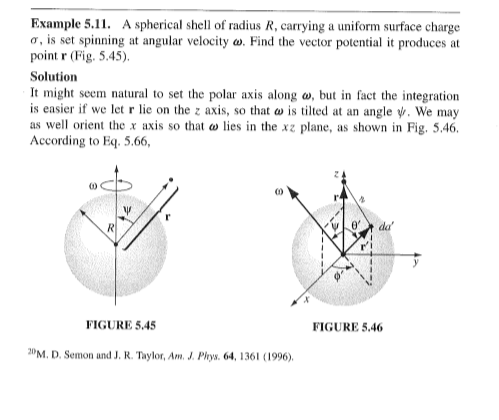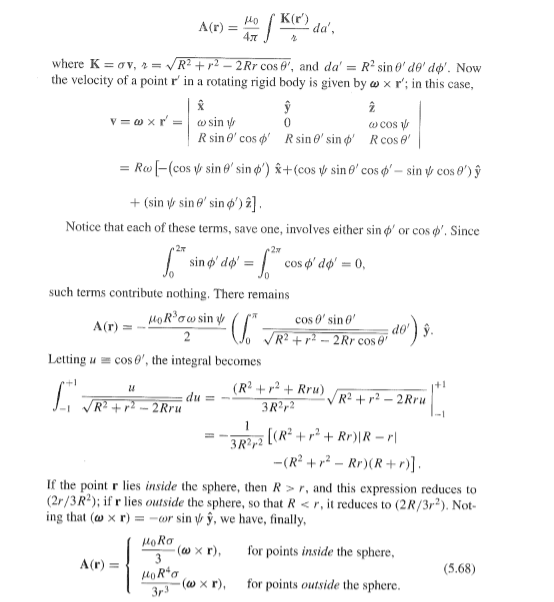-
Posts
42 -
Joined
-
Last visited
Profile Information
-
Favorite Area of Science
thermodynamic, electromagnetism and quantum mechanics
Recent Profile Visitors
2166 profile views
Tor Fredrik's Achievements

Quark (2/13)
2
Reputation
-

problem in proof for magnetic vec pot is 0
Tor Fredrik replied to Tor Fredrik's topic in Classical Physics
-

problem in proof for magnetic vec pot is 0
Tor Fredrik replied to Tor Fredrik's topic in Classical Physics
What other components could there be? -
I have tried to go through a proof for this which is used in physic texts: $$\nabla \cdot \vec{A}=\frac{\mu _0}{4\pi}\nabla \cdot \int \frac{ J(r')}{|r-r'|} dV'$$ again we use $$ \nabla \cdot \frac{ 1}{|r-r'|}=-\nabla' \cdot \frac{ 1}{|r-r'|}$$ If you go through the equations you would obtain that you could write: $$\nabla \cdot \vec{A}=-\frac{\mu _0}{4\pi} \int J(r') \cdot \nabla' \frac{ 1}{|r-r'|} dV'$$ Then they look at the integration as from integration by parts $$\int_{-\infty}^\infty g \frac{\partial f}{\partial x} dx = [gf]_{-\infty}^\infty - \int_{-\infty}^\infty f \frac{\partial g}{\partial x} dx$$ initially the integral is over the current which does not go from $$-\infty \:\: to \:\: \infty$$. I could perhaps reason and say that integrating from $$-\infty \: to \: \infty$$ would get the same result. But if we extend the reasoning I did get to For the $$-\infty \:\: to \:\: \infty$$ we did get: $$\nabla \cdot \vec{A}=-\frac{\mu _0}{4\pi} \int_{-\infty}^\infty J(r') \cdot \nabla' \frac{1 }{|r-r'|} dV'$$ $$ J(r') \cdot \nabla' \frac{1 }{|r-r'|}=J(r') \cdot[\frac{\partial}{\partial x'}\textbf{i}+\frac{\partial}{\partial y'}\textbf{j}+\frac{\partial}{\partial z'}\textbf{k}] \frac{1}{[(x-x')^2+(y-y')^2+(z-z')^2]^{0.5}}$$ for the first component: $$ g=J_x(r')$$ $$f=\frac{1}{[(x-x')^2+(y-y')^2+(z-z')^2]^{0.5}}$$ If we would have kept the integration limits from dV' it would be apparent that $$ [gf] \neq0$$ If we increase to from $$-\infty \:\: to \: \: \infty$$ it would be apparent that $$\int_{-\infty}^\infty g \frac{\partial f}{\partial x} dx $$ would not change after the increase in integration limits to $$-\infty \: \: to \: \: \infty$$ and $$- \int_{-\infty}^\infty f \frac{\partial g}{\partial x} dx$$ would change since $$\frac{\partial g}{\partial x} $$ is undefied when the current density ends but with from $$-\infty \:\: to \:\: \infty$$ we would get $$ [gf]_{-\infty}^\infty =0$$ which is a change? How does this prove that $$\nabla \cdot A=0$$ ? Additional info: Here is a proof from a physic text just in case. C below is used as current density above:
-

attempting to isolate frequency of an EM-wave
Tor Fredrik replied to Tor Fredrik's topic in Classical Physics
When the coil has turned 90 degrees it reaches equilibrium and deaccelerates to 0 velocity. Lets assume hypotetically that all this energy is released as one photon. Now I will try to introduce radiation pressure: So we hypotetically want the electron that has been deaccelerated to 0 velocity (I will ignore the current direction) to obtain the same kinetic energy and velocity. We want it to absorb a photon to do so. If we look at one half cycle of an EM wave that would be half of the energy of one photon if all of the energy of the photon is contained in one cycle. The EM wave exert radiation pressure as described above. It is also said that E=pc where p is radiation pressure density and E is energy density. Over a half cycle of an EM wave the avearge cycle can be obtained the following way: In order to calculate the amplitude of the EM wave I try the following: First I calculate the kinetic energy from the 90 degrees turn of the circular coil Then I try to find the amplitude of the EM wave and uses the theory for the radiation pressure above along with E=pc: Is this a wrong usage of the radiation pressure? -
First I will add some theory Then I will try to derive rydberg energy formula from a kinetic perspective The numbers above is correct for the rydberg formula. Is it possible to derive plancks constant, bohr radius or velocity for electron in n=1 for hydrogen atom with this? This is how far I get equating centripetal force and coulomb attraction:
-

attempting to isolate frequency of an EM-wave
Tor Fredrik replied to Tor Fredrik's topic in Classical Physics
-

attempting to isolate frequency of an EM-wave
Tor Fredrik replied to Tor Fredrik's topic in Classical Physics
In the theory aove they calculate the perturbation of an E-field. Since there is kinetic energy involved I thought perhaps that the energy also could be emitted as an EM-wave. The issue is that they dont adress the mass of the moving part of the infinte sheet. If that mass was known one could use kinetic energy as well. Then I have for equalities: Is it possible to isolate them for h without having f or B as a variable? -

attempting to isolate frequency of an EM-wave
Tor Fredrik replied to Tor Fredrik's topic in Classical Physics
Is there a way to calculate this? -

attempting to isolate frequency of an EM-wave
Tor Fredrik replied to Tor Fredrik's topic in Classical Physics
Well with my calculations there would be a formula for finding frequency f without using E=hf? But I needed clarifications since the solutions to maxwell dont directly tell me how to quantify its energy. -

attempting to isolate frequency of an EM-wave
Tor Fredrik replied to Tor Fredrik's topic in Classical Physics
well I thought E=hf is only valid for photons? -

attempting to isolate frequency of an EM-wave
Tor Fredrik replied to Tor Fredrik's topic in Classical Physics
well what if we just stopped an electron with kinetic energy and then equated this as the energy of the EM-wave released? -
the theory above from physics stack exchane made me puzzle a little One set of possible solutions to maxwell equations are It is known that deacceleration of an electron creates EM-waves. If you have a constant acceleration of an electron from a B field and stops the electron then all kinetic energy should be given out as an EM-wave so that Anyone have anything to add of an experiment that could determine the frequency this way?
-
In the example 5.11 above I don't understand how they revert to the natural coordinates while going from (5.68) to (5.69). In (5.68) the direction is along the y-axis. In (5.69) it follows the angle that goes round the sphere. But this angle is normal to y when it is at the y axis and parallell to the y axis while it is at the x-axis. How is it possible to revert between the y-axis in (5.68) and the angular axis in (5.69)?






